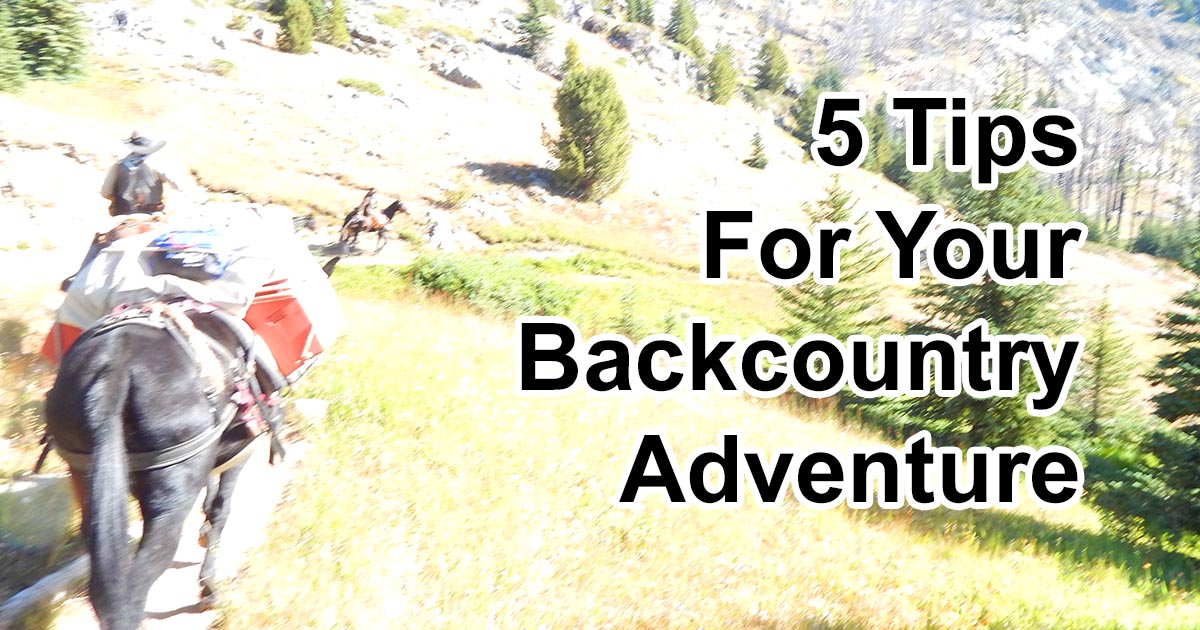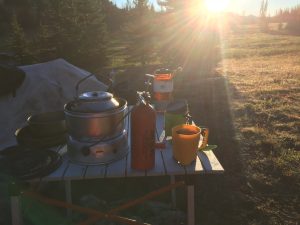5 Tips for Your Backcountry Trip
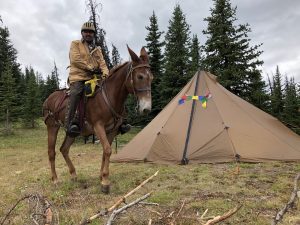 Riding and camping in the backcountry is the ultimate way to experience less traveled wilderness. When you’re exploring new areas, it pays to be prepared.
Riding and camping in the backcountry is the ultimate way to experience less traveled wilderness. When you’re exploring new areas, it pays to be prepared.
Knowing what to expect in the backcountry will help you decide what to take as well as help if your plans unexpectedly change. After all, you can’t jump in your car to resolve a rainy-day tent failure or a minor medical emergency when you’re 20 miles from the trailhead. Here are our basic guidelines to prepare for overnight treks into remote areas.
1 – Try a Practice Run at Home
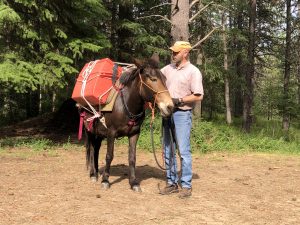 Test out any new equipment before your trip. Learn how to set up that new tent at home and try out new saddles and tack before you leave.
Test out any new equipment before your trip. Learn how to set up that new tent at home and try out new saddles and tack before you leave.
Before you hit the backcountry, take a few rides with the same load out as you’ll carry it into the field. It’s better to adjust things at home than on the fly. In fact, taking a few rides with a real load before your trip will help you gauge your, and your animal’s, fitness for the trip.
2 – Do the Research
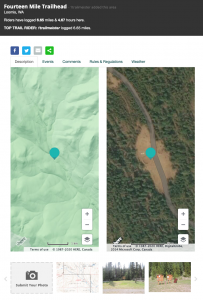 Now is the time to starting learning about an area to see if it fits your plans. I always start with an online search where a few quick clicks will return a lot of information about great horse camping areas. I go to www.TrailMeister.com first for a complete idea of what to expect at a given area including pictures, accurate directions to the trailhead, trail maps of the area, weather, links to land managers, and even GPS tracks.
Now is the time to starting learning about an area to see if it fits your plans. I always start with an online search where a few quick clicks will return a lot of information about great horse camping areas. I go to www.TrailMeister.com first for a complete idea of what to expect at a given area including pictures, accurate directions to the trailhead, trail maps of the area, weather, links to land managers, and even GPS tracks.
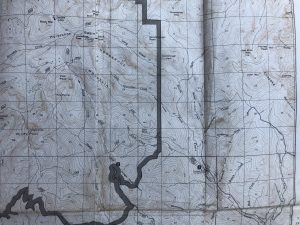 Know the Weather and Terrain
Know the Weather and Terrain
A major factor to consider is the forecast and season. You need to pack and prepare for just about any weather, and it’s important to have realistic expectations before you go.
- Check a topographic map to see what altitudes you’ll encounter. Remember that the weather can vary widely with elevation. A warm summer day at 700 feet can be a snowy wonderland at 7,000.
- Make a mental note of your expected route and destination point. How far will you be from your truck or base camp? Will you be riding a loop or have an out and back route? What are alternate routes to take in the event that Plan A fails and you need a Plan B.
- Also, check what type of terrain you’ll be in: Will there be ample grazing and water for your animals? Is it open space, heavily forested, or marshy?
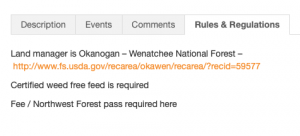 Know the Rules
Know the Rules
Knowing an area’s regulations beforehand will make your trip much smoother.
- Do you need permits?
- Are there fire restrictions?
- Are there bear restrictions?
3 – Pack Right
Most of what you’ll take will be determined by your destination and what type of weather you’ll likely encounter. All of your equipment should be as practical, comfortable, and as lightweight as possible. Your pack animal will thank you! Quality gear comes at a premium, but pounds not carried are worth their weight in gold.
Organize gear into two groups; human and equine.
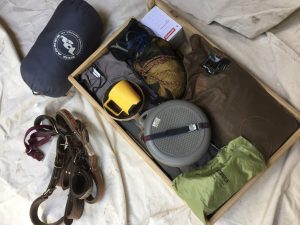 Human Needs
Human Needs
- Clothing –Jacket, stocking cap and gloves, camp shoes, insulating layers, etc.
- Shelter – tent / hammock, foam insulation pad, sleeping bag, etc.
- Cooking – Cook stove and fuel, pots, cooking utensils, cup, water filter, etc.
- Emergency / 10 Essentials – Remember to keep the 10 Essentials on your person in case you separate from your riding animal. Take a few days extra of any medications you need. https://www.trailmeister.com/the-ten-essentials-for-every-trail-ride/
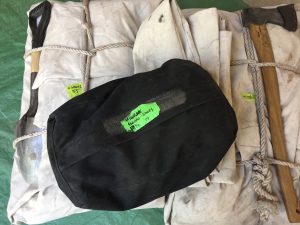 Equine Needs
Equine Needs
- Saddles – Make sure that they fit well and that you have good saddle pads.
- Panniers – Options include hard boxes that can deter a hungry bear to soft bags that are more forgiving to your pack animals. Regardless of the type, balance is everything, so be sure to load with the same weight and volume on each side.
- Containment Options – There are several good options for keeping your animals in one place during your trip. I use all of three. Before using any of these techniques in the backcountry make sure to get your horses used to them at home first.
- Highline – The gold standard. A strong rope strung between two sturdy trees protected by tree savers will ensure that you’ll be riding instead of walking the following morning. This video will help – https://www.trailmeister.com/hold-your-horses-highline-revamp/
- Hobbles – Will nearly immobilize your horse. At first. Where grazing is permitted hobbles are an excellent way to allow your animals to graze while under your strict supervision.
- Electric Fencing – Another excellent way to allow your animals to graze and relax while under supervision. Electric fencing is not a substitute for a highline. Your animals may believe in the bite of the fence, but the local elk or deer population doesn’t and they are apt to bolt and tear down the thin line if you’re not careful. https://www.trailmeister.com/backcountry-electric-fence/
- Equine First Aid Kit – Check with your veterinarian for suggestions about what to take and how to treat minor issues. https://www.trailmeister.com/your-first-aid-kit/
- Brush, curry, hoof pick, insect repellent, collapsible bucket, etc
Additionally, if you’re in bear country, you want to carry bear spray. It’s better to have it and not need it than the alternative.
And one last thing: There are no bathrooms. Bring biodegradable toiletries. And don’t forget a trowel or shovel for digging catholes.
4 – Sleep Setup
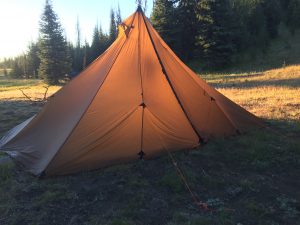
The Redcliff, by Seek Outside
The old boy scout motto “ Be Prepared” still holds true. Being prepared for sleeping in various conditions is not an exception. Your sleeping gear must be matched for the weather conditions in the area that you plan to camp.
- A three-season tent is fine for most camping trips.
- A sleeping pad is essential. Not only does a pad add comfort, most importantly it also provides insulation from the ground.
- Regarding sleeping bags, it’s fair to say you should find one that is temperature-rated below what you expect.
When embarking on a multi-day trip the backcountry, a certain level of discomfort is to be expected. Prepare your mind for this and embrace it. Sleeping in the backcountry will never be as comfortable as a night at a Hilton, but with proper planning and the right equipment, it can be quite acceptable. It’s a necessary skill to master for those wanting to head away from the beaten path. Ride hard enough and a bed of granite and tree roots can feel like a pillow top mattress.
5 – Meal Planning
Whether it’s a quick overnight trip or a multi-day adventure, you want meals that will nourish and strengthen you, and also taste really good! You’ll also want to factor in meals for your animals. Here are some quick ideas and to common questions about meal planning for backpacking trips;
- How long will you be out? Factor in meals you’ll eat at the trailhead and when you’re done with your trip.
- What is the size of your group? Meals can be much simpler if you’re going solo. If you’re camping with others, decide if you want to share meals. A larger group can split the weight of food as well as fuel and cookware.
- What’s your meal plan? It helps to make a meal plan to know how much food to take. This could be as simple as writing it out on paper; or as complex as creating a spreadsheet. Start with dinners, which generally are the biggest meals of the day and the ones you’re likely to sit down for.
- Test out recipes at home: Just as it’s good practice to test out your stove or tent at home first, try new potential camping recipes before you leave. Although trail food always magically tastes better on the trail, practice can give you an idea of how much effort it will be to make, cooking time, and adjustments you might want to make for taste. HERE’S A STARTER RECIPE – https://www.trailmeister.com/f-is-for-food/
- For the ponies: At 2% of body weight per horse per day you won’t easily be able to take enough feed for your animals. Period. End of story. Instead, you’ll have to allow time during the day for your animals to graze. Hand grazing is relaxing for everyone. Portable electric fences are also good options.
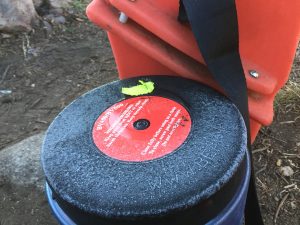 If you’re camping in bear country, remember that smelly things (including toothpaste) can attract unwanted attention. A point about food that is often overlooked is that all kinds of animals raid food, not just bears. Don’t let a food supply picked through by rodents be a trip-ender. For that reason we always store our food in bear canisters. Here’s the one we use – https://amzn.to/3ne9szA
If you’re camping in bear country, remember that smelly things (including toothpaste) can attract unwanted attention. A point about food that is often overlooked is that all kinds of animals raid food, not just bears. Don’t let a food supply picked through by rodents be a trip-ender. For that reason we always store our food in bear canisters. Here’s the one we use – https://amzn.to/3ne9szA
One Last Thought
Like most outdoor adventures, you need to be ready to change your plans. Mother nature doesn’t care if you traveled hundreds of miles for your backcountry trip. And neither should you let that factor into your own decision making. Try to remember that it’s not a failure if everything doesn’t go according to your plan. Improvise as much as you can and have a good time camping! One of the many appeals of backcountry rides is the challenge they represent and the memories that remain afterward.


